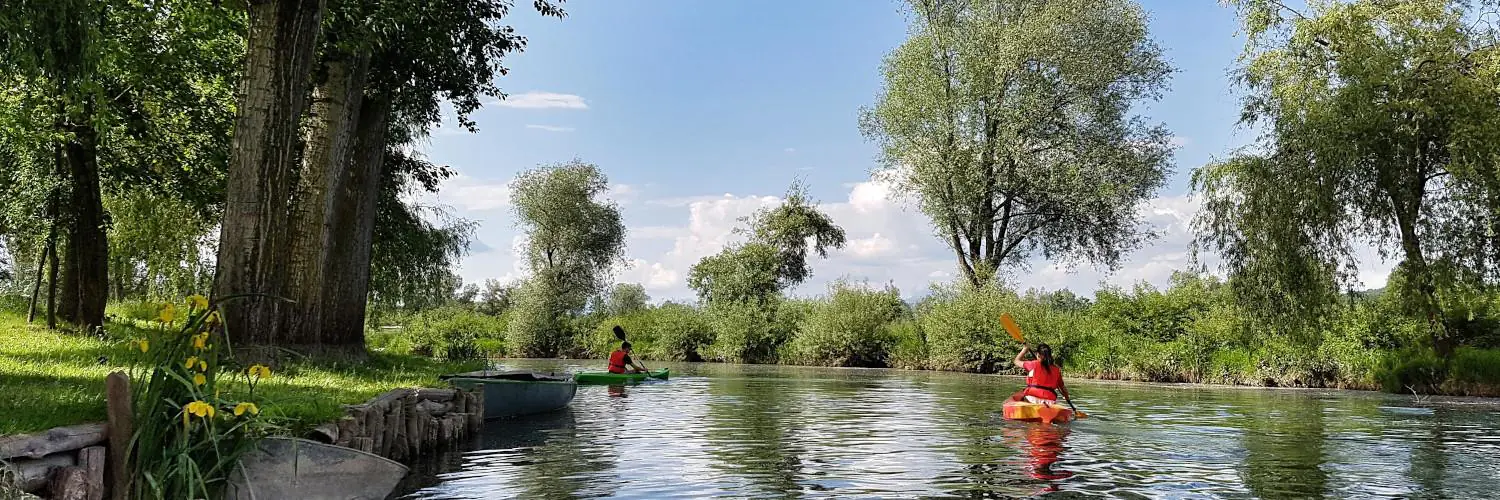Paddles come in various forms and some of them float to a certain extent. Some types may slowly sink as well.
Table of Contents
What makes paddles float?
The weight and materials used in a kayak have an effect on their buoyancy. The shape and other things matter too. It stands to reason that manufacturers should ensure at least decent flotation of their paddles, and this is usually the case. Nonetheless, getting an understanding of kayak paddle design will help you determine the buoyancy of a paddle before buying it.
Ss always, skimping on essential tools often leaves you with something that doesn’t work. For example, there are paddles that sink and ones that drift away too easily. If you want to be sure, consider an unsinkable paddle.
In addition to the actual weight, there’s also the factor of swing weight. This is the perceived weight of the paddle as you use it. In other words, it determines how heavy it feels to paddle. Since there is an upswing and a downswing, and there’s both gravity and water resistance to consider, swing weight doesn’t always scale with absolute weight. More water resistance means paddling takes more strength, but it also means the paddle is more likely to float well. It’s often a matter of surface area and displacement of water. Swing weight increases with the size of the paddle. Since a bigger paddle will typically have more weight but also more surface area, the effect on flotation varies. You can test the swing weight of your paddle by holding it the way you’d normally paddle and swinging it through the air.
Kayak Paddle Materials
Different materials float differently and it’s not just about their weight. This is the main reason why price matters.
Aluminum paddles are common in the cheaper end, but aluminum isn’t the most floaty of materials. Although the shaft is a hollow tube, it’ll still sink on its own. The plastic blades on the ends give it some buoyancy, but it may not always be enough. And on a cheap paddle, they may come off. There’s more risk of sinking than there is with high-end paddles. Plus, fatigue can build up pretty quickly with aluminum paddles.
While wooden paddles aren’t very common these days, they still exist. These solid wood designs are heavier than modern paddles. And sometimes, they sink. You may be wondering, do kayak paddles float a whole lot better with a different design? The answer is yes. Modern composite paddles consist of specially selected materials that provide both easier paddling and better buoyancy. Common examples are fiberglass and carbon fiber shafts with sturdy plastic blades. While fiberglass paddles aren’t too much lighter than aluminum ones, carbon fiber kayak paddles are significantly lighter. However, price increases with these materials. High-end carbon fiber paddles cost more than fiberglass ones, which in turn cost more than aluminum paddles.
Shape of the Paddle
Another element that affects the answer to “do kayak paddles float?” is the shape. And we’re not talking about the shape of the shaft. While it affects the ergonomics and some are better for fishersmen and fishing kayaks, and others are better for racers, it doesn’t play a role in making the paddle float. However, the size and shape of the blades do. Certainly, more surface area means better buoyancy. Basic paddles sometimes have symmetrical blades, much like canoe paddles. While this design may float better, it isn’t optimal for kayaking performance.
Asymmetrical blades with tops that reach further than the bottoms will cut through the water surface better and give you a more even push that makes better use of the whole blade. Since you sink the blade at an angle, you’d get an uneven distribution of resistance with a symmetrical blade.
As a result of slimming and skewing the blades to make everything lighter for maximum performance, some of the high-end paddles lose a bit of buoyancy. They may eventually sink in some cases. But generally, you’ll have plenty of time to retrieve the paddle before that happens.








